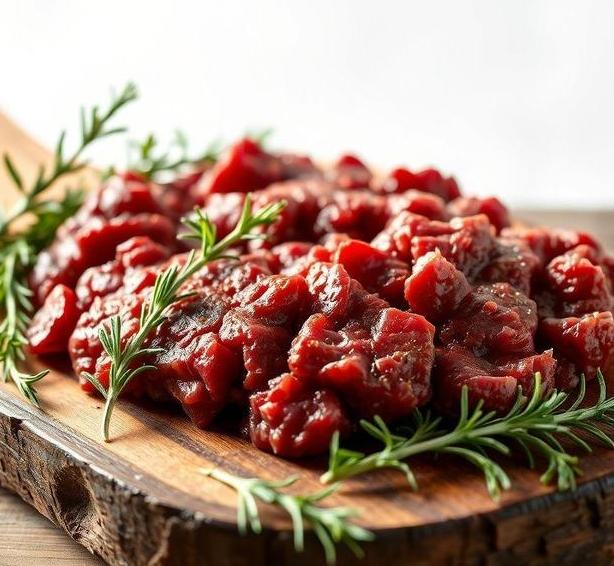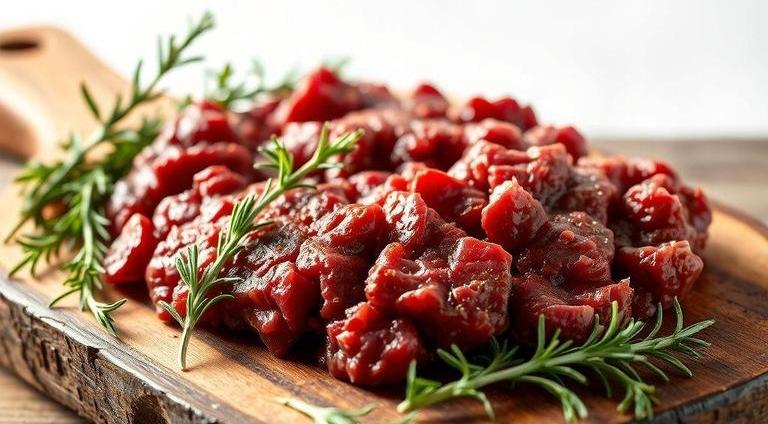Can Ground Venison Go Bad : What You MUST Know
Ground venison is one of those delicacies that many hunters and food enthusiasts swear by, not only for its rich, earthy flavor but also for its lean protein content. It’s a versatile meat that can be used in a variety of dishes, from burgers and tacos to stews and sausages. But like any perishable food, ground venison needs to be handled with care to preserve its freshness and prevent spoilage. If you’ve got some in your freezer or fridge and are wondering how long it lasts or when it’s time to toss it, this guide will give you everything you need to know. We’ll dive deep into understanding spoilage signs, storage tips, and how to make sure your ground venison stays as fresh as possible.
Can Ground Venison Go Bad?
Yes, like any other type of meat, ground venison can absolutely go bad. Fresh game meat, while a healthier and leaner option compared to conventional meats, is more prone to spoilage if not stored properly. The natural makeup of venison, with its low fat content and slightly different protein structure, can make it especially vulnerable to bacteria and other spoilage agents.
The primary culprits that contribute to ground venison going bad are:
- Bacteria growth: Meat, especially ground meat, provides an ideal environment for bacteria, like Salmonella and E. coli, to multiply if not refrigerated or frozen promptly.
- Enzyme breakdown: Over time, enzymes in the meat can break it down, affecting both its texture and flavor.
- Oxidation: Exposure to air can cause venison to oxidize, leading to an off-putting color change and unpleasant odor.
Shelf Life For Ground Venison

The shelf life of ground venison varies based on whether it’s stored in the fridge or freezer, and the initial freshness of the meat when you bought it. Here’s a breakdown to help you understand just how long ground venison will stay safe to eat:
-
Refrigerated (fresh Ground Venison)
- In the fridge, ground venison will stay good for 1-2 days. Since venison is leaner than beef, its shelf life is much shorter.
- After 1-2 days, the risk of bacteria growth and spoilage increases significantly, so it’s best to either cook it or freeze it within this time frame.
-
Frozen (ground Venison)
- If properly packaged and stored in a freezer, ground venison can last up to 6-12 months. The freezer helps to slow down bacterial growth and preserve the meat’s flavor and texture.
- After 12 months, the quality may deteriorate in terms of texture and flavor, though it’ll still be safe to eat if kept at a constant freezing temperature (below 0°F).
Common Signs Of Spoilage
Knowing how to identify spoilage signs in ground venison is crucial to avoid foodborne illnesses. Here are the common indicators to look out for:
-
Color Change
- Fresh ground venison is typically a deep red color. If the meat turns a brown or grayish hue, it could be a sign that it’s starting to spoil due to oxidation or bacteria.
- A slight color change doesn’t necessarily mean the meat is bad, but if it’s accompanied by other signs, proceed with caution.
-
Unpleasant Smell
- One of the most obvious signs that ground venison has gone bad is its smell. Fresh venison will have a mild, slightly earthy scent. If it develops a sour, rancid, or foul odor, it’s a clear sign that bacteria have started to grow, and the meat should be discarded.
-
Slimy Or Sticky Texture
- If the ground venison feels slimy or sticky to the touch, it’s likely a sign of bacterial overgrowth. The texture should be firm and moist, but not overly slippery.
-
Excessive Dryness or Freezer Burn (if frozen):
- Freezer burn can occur when the meat is not wrapped tightly enough in the freezer, leading to dry, discolored patches. While it doesn’t make the meat unsafe to eat, freezer-burned venison will have a tough texture and poor flavor.
How To Store Ground Venison?

Proper storage is key to maximizing the shelf life of ground venison and preserving its flavor and texture. Here’s a step-by-step guide on how to store it in both the refrigerator and freezer:
In The Refrigerator
- Keep it cold: Store ground venison in the coldest part of your fridge (usually the back), ideally at temperatures between 32°F and 36°F.
- Use an airtight container: If the venison is still in its original packaging, make sure it’s tightly sealed. If it’s not, transfer it to an airtight container or wrap it in plastic wrap or aluminum foil.
- Use within 1-2 days: As mentioned earlier, fresh ground venison doesn’t last long in the fridge. Aim to cook or freeze it as soon as possible.
In The Freezer
- Use freezer-safe bags or containers: For long-term storage, transfer ground venison to a vacuum-sealed bag or a freezer-safe Ziploc bag. Make sure to remove as much air as possible to prevent freezer burn.
- Label and date: Always mark the packaging with the date you froze the venison. This will help you track its age and ensure you use it within the optimal time frame.
- Thaw carefully: When you’re ready to use frozen ground venison, thaw it in the fridge overnight to maintain its texture and prevent bacterial growth. Never thaw meat on the countertop at room temperature.
Expert Tips
- Vacuum-sealing: This is one of the best ways to preserve ground venison for longer periods in the freezer. Vacuum-sealing removes all air, which prevents oxidation and freezer burn, keeping the meat fresher for months.
- Portion control: When freezing ground venison, consider portioning it into meal-sized servings before storing. This way, you only need to thaw what you’ll use, keeping the rest of the meat frozen and safe.
- Cooking before freezing: If you have extra ground venison that you don’t think you’ll get to in time, consider cooking it first before freezing. Cooked venison can be stored in the freezer for 3-4 months and will save you the trouble of having to defrost and cook raw meat later.
- Marinate before freezing: If you plan on marinating ground venison, freeze it in the marinade. This helps preserve its flavor while making meal prep easier in the future.
FAQs
Can Ground Venison Go Bad If Not Stored Properly?
Yes, ground venison can go bad if not stored properly. It should be refrigerated or frozen to maintain its freshness. If left at room temperature for more than two hours, harmful bacteria can multiply, causing spoilage.
How Long Does Ground Venison Last In The Refrigerator?
Ground venison typically lasts 1 to 2 days in the refrigerator. It is best to consume it within this time frame to ensure safety and quality. If you don’t plan to use it within this period, it should be frozen.
How Long Can Ground Venison Be Frozen Without Going Bad?
When properly packaged, ground venison can last for up to 6 to 12 months in the freezer without significant loss of quality. After this time, it may still be safe to eat but may suffer from freezer burn and texture degradation.
What Are Signs That Ground Venison Has Gone Bad?
Signs that ground venison has gone bad include a sour or off smell, discoloration (such as brown or grayish hues), and a slimy or sticky texture. If any of these are present, the meat should not be consumed.
Can Ground Venison Spoil Even If It’s Frozen?
Ground venison can still spoil while frozen if it’s not properly wrapped or stored in an airtight container. Exposure to air can lead to freezer burn, which negatively affects the texture and taste, though it may not necessarily be unsafe to eat.
How Can I Tell If Ground Venison Has Been Contaminated With Bacteria?
Bacteria contamination is often not visible, but symptoms of food poisoning such as nausea, vomiting, diarrhea, and stomach cramps after consuming the venison could indicate contamination. Always check for other signs like unusual smell or texture before eating.
Can I Eat Ground Venison That Has Turned Brown?
Brown ground venison is typically safe to eat as long as there are no signs of spoilage like a foul odor or sliminess. The browning may result from exposure to oxygen and does not necessarily indicate the meat is bad.
How Should Ground Venison Be Thawed To Prevent Spoilage?
The best way to thaw ground venison is in the refrigerator, where it stays at a safe temperature. Alternatively, you can thaw it in cold water or use the microwave, but these methods should be done just before cooking to avoid bacterial growth.
Can Cooking Ground Venison Make Spoiled Meat Safe To Eat?
Cooking ground venison may kill bacteria, but it will not eliminate toxins produced by spoiled meat. If the meat has gone bad (e.g., foul odor, slimy texture), cooking it will not make it safe to eat.
Can Ground Venison Be Stored In The Freezer For More Than A Year?
Technically, ground venison can be stored in the freezer for more than a year. However, for optimal quality, it is recommended to consume it within 6 to 12 months. After that time, the texture and flavor may degrade, though it will still be safe to eat if properly stored.
